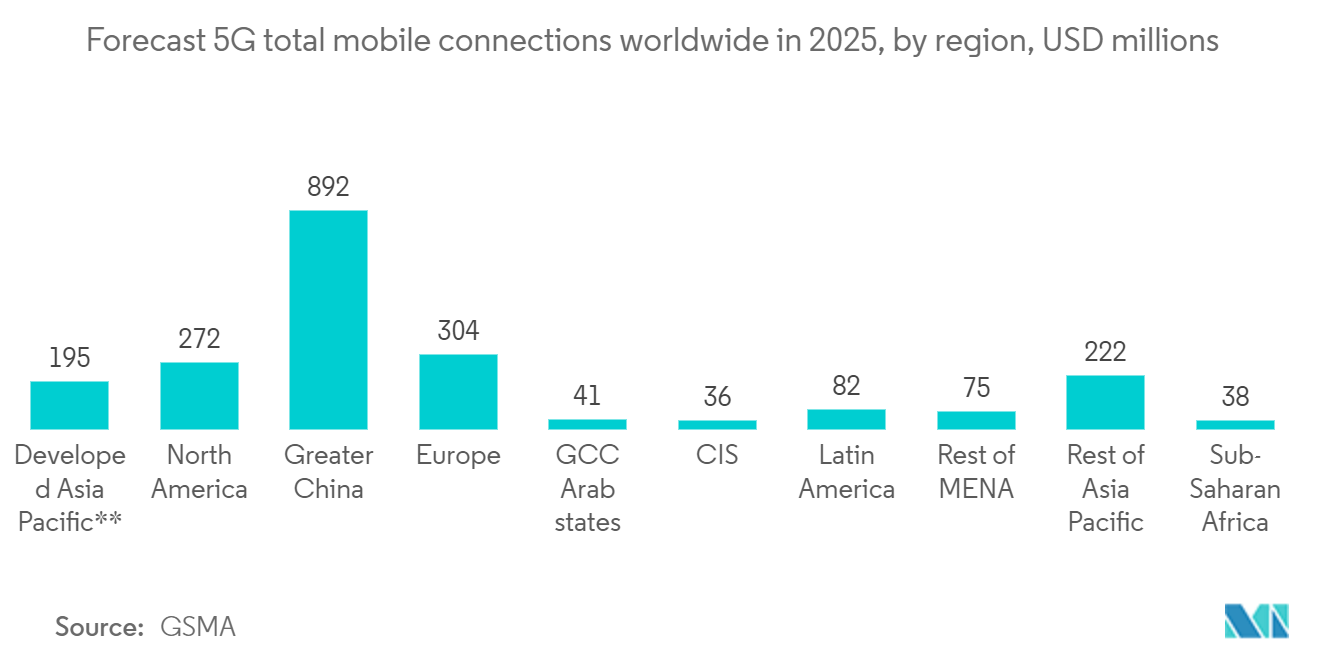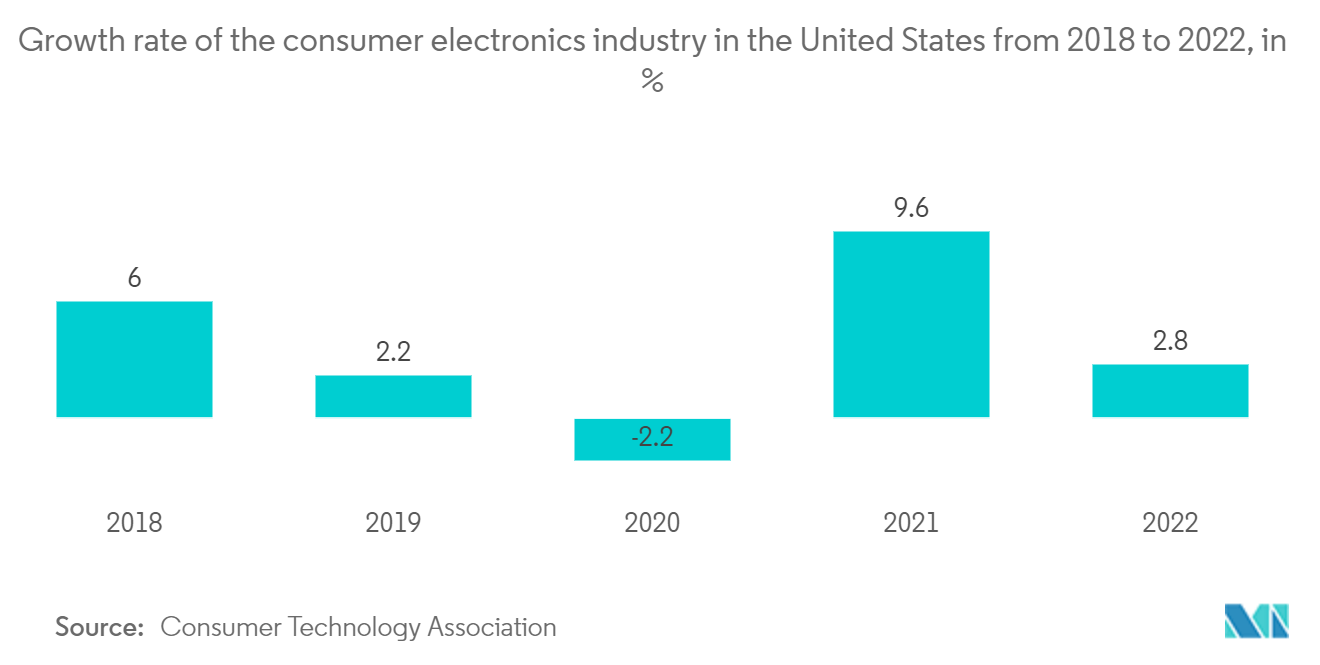Market Trends of Data Converter Industry
This section covers the major market trends shaping the Data Converter Market according to our research experts:
Telecommunication to Account for Significant Market Share
- Telecommunication infrastructure is stimulating market growth owing to the advent of 4G communication and the emerging 5G communication. Manufacturers of wireless infrastructure, especially 4G and 5G, are constantly reducing the size and cost of newly installed wireless infrastructure while holding to high standards of performance, functionality, and quality of service. The data conversion block is a critical function in wireless infrastructure designs. The analog-to-digital converter (ADC) is the fundamental block that digitizes the incoming intermediate frequency (IF) signal and then passes the digital data to the digital downconverter.
- The wide bandwidth demands of the 5G solution can be met by moving frequency translation and filtering from the analog to the digital domain. Two RF converters are part of this digitization wave: the AD9081/AD9082 mixed-signal RF converters, which analog devices introduce. They have been engineered to install multi-band radios in the same footprint as single-band ones, which helps to increase call capacity three-fold, compared to the call capacity available in today's 4G LTE base stations.
- Further, the radio architecture core must be tightly integrated for a 5G solution to support small antenna deployments. One solution is the traditional approach combining multi-Giga sample ADCs and DACs with a System-on-Chip (SoC). This approach provides the ability to perform the embedded system design and to address the increased required operating bandwidths. Several data converters implement interfaces using JESD204B.
- Also, over the past ten years, FPGA manufacturers like Xilinx have been improving technology by reducing the silicon fabrication structure size and, as a result, the device's size, weight, and power (SWaP) values. The latest system-on-chip (SoC) device from Xilinx, the RFSoC, consists of FPGA fabric with arm processors, analog-to-digital converters (ADCs), and digital-to-analog converters (DACs) all on the same chip.
- This 16-nm technology has over 4.2K DSP slices, four 1.5-GHz A53 Arm processors, two 600-MHz R5 ARM processors, eight 4-GHz, 12-bit ADCs, and eight 6.4-GHz, 14-bit DACs per device. COTS (Commercial-off-the-shelf) manufacturers can use this game-changing technology to provide multichannel, SDR transceivers for engineers developing 5G radio products.

North America to Hold the Largest Market Share
- North America holds the highest share due to the growth in the telecom sectors and the use of FPGA (field-programmable gate array). The rising demand for A2D converters in consumer electronics for high-resolution images has become an essential part of driving the market.
- Further, sensor applications in automotive that require data converters range from temperature sensors identifying different engine statuses to radar/LIDAR enabling automotive driver assistance systems (ADAS). Other data converters applications include wireless transceivers for communicating with other vehicles or fixed networks. The USD 7,500 per vehicle tax credit that has boosted EV sales in the United States is drafted to be repealed without any increment in the upper limit of the incentive.
- Also, tariff risk is compelling foreign companies to shop in North America. Volkswagen announced spending USD 800 million to build a manufacturing facility in Chattanooga, Tennessee. Further, Toyota and Mazda are joining forces to construct an assembly plant in Huntsville, Alabama. The factory, which costs about USD 1.6 billion, would have a production capacity of 300,000 units per year. These instances are expected to increase the data converter market's growth in the region's automotive segments.
- Further, IT and telecommunications applications were estimated to have the largest share of the data converter market in the United States. The growth is driven by the development of the 4G network, with superior modulation and antenna methods for improved voice and data services, which enhances the demand for the AMS blocks.
- Further, according to GSMA, in the United States, the 5G adoption rate as a share of mobile connections is expected to increase by 33%, 40%, and 46% in the coming three years, respectively. This further enhances the growth of applications in 5G for data converters.


